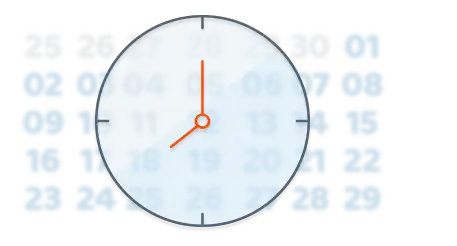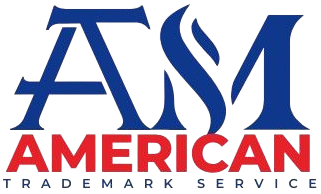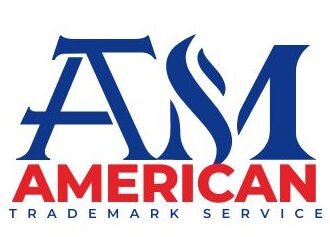File Your Statement of Use Extension Online.
Need more time to file your Trademark Statement of Use Extension with the USPTO? Let us help you extend your deadline for another six months.
- 35,000+ five-star reviews
- Rated 4.8 by Forbes Advisor
- Rated 4.5+ on Trust Pilot

Fast and Easy 3 Steps
You’ve worked hard to protect your brand. Don’t let it lapse.
Answer a few questions
Whether you know your serial number or not, in less than five minutes you can answer the questions needed to start the process.
Review your Application
We will send your application to you for your review and signature.
Application Filed
We will file the application and pay your fees so you can focus on building your brand.
Why use American Trademark Services for your Statement of Use Extension?
- With or without your serial number, we can make sure your filing is complete and done right.
- Our questionnaire includes step-by-step instructions to help you.
- You will have a chance to review and sign the filing before it is filed.
- Access to your cloud-based account for all documents, status updates and deadlines.
- Full customer service support via phone, email or chat.

Complete the Process with a Few Clicks of the Mouse
If you filed an Intent to Use application, you already got your place in line before you were actually using your mark. If you haven’t quite started using your mark in commerce yet, it’s OK. The USPTO allows up to five six-month extensions. Request your extension today to hold you place in line.
What our customers are saying

Trademark Registration Success
“I was nervous about the trademark process, but this team made it so easy! Their step-by-step guidance and commitment to getting it done right gave me peace of mind. Highly recommend this service to anyone looking to protect their brand!” "Highly Recommend Their Services"
Business Formation Made Easy - Smooth and Efficient
“The team handled all the legal complexities of forming my LLC. I felt supported throughout the entire process, from choosing the right structure to completing the necessary filings. Their professionalism and attention to detail made everything run smoothly and efficiently.”
Copyright Registration Support
“Registering my creative work seemed daunting, but with their expert guidance, it was a breeze. They were incredibly professional, and my copyright was filed quickly. The process was smooth, and I now feel confident my work is protected.”
Excellent Website Protection
“After dealing with content theft, I needed a reliable solution to protect my website. This service was exactly what I needed! The protection badge and monitoring provide me peace of mind knowing my work is safeguarded against online infringement.”
Complete Business Solutions
“From trademarking my brand to setting up my business and protecting my intellectual property, this team has been invaluable. They provided thorough and reliable services that ensured everything was in place for my business to succeed long-term. Comprehensive and Reliable"FAQs
A Statement of Use is generally due within six months from when the USPTO issued the Notice of Allowance, or within six months of a previously granted extension. Generally, missing the deadline means the application will be considered “abandoned.” Future efforts to register the trademark will typically require the applicant to start all over including payment of new USPTO filing fees. Learn more about our Statement of Use filing services.
Applicants who are not using the mark in commerce within six months after filing an Intent to Use application may need to file an extension request and the required fee(s) to avoid abandonment. The USPTO generally allows applicants to file up to five six-month extensions.
In addition to American Trademark Services’s service fee, the USPTO charges $150 per class, which is the USPTO filing fee.
Under such circumstances, an applicant can do what is referred to as “dividing an application.” There are additional UPSTO fees to do this because it creates what the USPTO calls a “child” and “parent” application. There is also a slightly increased American Trademark Services service fee because of the extra processing. But, dividing an application is an option that some companies choose in order to register a mark as one class of goods while preserving rights on another. This can allow extension of the six-month deadline for the class of goods not yet in use, but register for the class of goods or service that are already in use.
If trademark applicants aren’t using their mark in commerce, the applicant can file an Intent to Use Application and generally, if all goes well, receive a Notice of Allowance. Within six months of being granted the Notice of Allowance, the applicant generally has to prove that it is now using the mark or request up to five six-month extensions. The USPTO requires a specimen to prove use in commerce when a Statement of Use is filed.
- A $150 per class USPTO fee.
- A specimen of the mark showing that it is in use in commerce.
- Verification that the mark is in use as indicated on the application.
According to 15 U.S.C. § 1127, a mark used in commerce in the following ways is “in commerce”:
With regard to goods, use in commerce generally occurs when the mark (A) is placed in any manner on the goods or their containers, the displays associated therewith or on the tags or labels affixed thereto (if the nature of the goods makes such placement impracticable, then on documents associated with the goods or their sale), and (B) the goods are sold or transported in commerce.
With regard to service, use in commerce generally occurs when the mark is used or displayed in the sale or advertising of services and the services are rendered in commerce, or the services are rendered in more than one State or in the United States and a foreign country and the person rendering the services is engaged in commerce in connection with the services.
Typically, a specimen is a real-world sample of how the mark is actually in use with the goods and/or services identified in the application. It is what the consumers actually see when they are purchasing the goods or services.
Here are some more detailed tips from the USPTO:
A specimen for goods (products) usually shows the mark on the actual goods, on labels/tags affixed to the goods, on packaging, or in a product display for the goods (like a window display). Advertising materials are generally not acceptable as a specimen for goods, nor are materials used to carry out your daily business (e.g., invoices, packing slips, etc.). The USPTO typically accepts the following specimens for goods:
- A photograph of the product showing the mark directly on the product (e.g., the bottom of a coffee mug)
- Product labels and tags showing the mark (e.g., the label on a t-shirt)
- Product packaging showing the mark (e.g., detergent soap packaging)
- Signage used in a product display at a store (e.g., a photograph of the display)
- A webpage showing or describing the product near the mark and with purchasing information (e.g., a webpage showing a photograph of a computer laptop, the mark for the laptop appearing above the photograph, the price appearing below the photograph, and a shopping cart button/link appearing on the page)
- For downloadable software, copies of the instruction manual and screen printouts from (1) web pages showing the mark in connection with ordering or purchasing information or information sufficient to download the software, (2) the actual program that shows the mark in the title bar, or (3) launch screens that show the mark in an introductory message box that appears after opening the program
A specimen for services generally shows the mark used in the sale, rendering, or advertising of the services. A consumer should be able to directly associate your mark with the services you identified in the application on the specimen. The USPTO typically accepts the following specimens for services:
- Print or Internet advertising
- Brochures and leaflets
- Menus for restaurants
- Business cards and letterhead
- Marketing and promotional materials
- A photograph of business signage and billboards
- A photograph of a musical band performing with the band's name displayed during the performance (e.g., on the band's drum)
*Specimens consisting of advertising, marketing, and/or promotional materials must show a direct association between the mark and the services. However, if your mark itself references the services, the specimen would show a sufficient direct association (e.g., ABC MEDICAL for a medical clinic).
If an applicant is granted a Notice of Allowance for multiple classes, but decides not to pursue a registration for one or more of those classes, the applicant may simply disclaim the unwanted class when filing the Statement of Use. By disclaiming a class, the USPTO will generally treat the application as abandoned as to that class while proceeding with the class or classes still being pursued.
To understand this, let’s look at the common example of clothing. Many people file an Intent to Use under Class 25 for clothing and then list, shirts, pants and shoes. In this example, let’s say the applicant is selling shirts, but not pants or shoes. Just like with a class, any description of goods within a class not included in the Statement of Use generally will be permanently deleted from the trademark registration. The applicant will have to file a new trademark application to cover any of the items left off of the Statement of Use. While the USPTO may request a specimen showing the use for one type of good or service only within the class (for our example, a shirt), the applicant will have to state, subject to perjury, that it actually is using the mark for all of the goods listed on the Allegation of Use. Therefore, an applicant only selling some of the items within a class may want to file an extension or divide the application.


